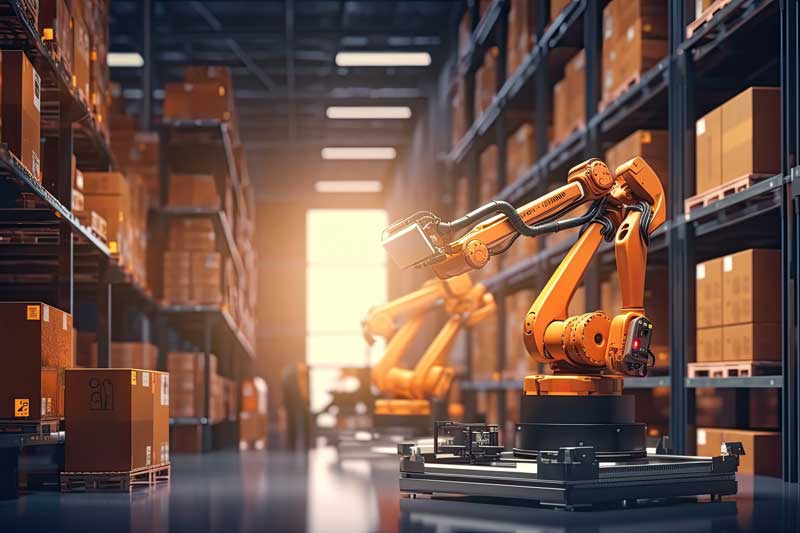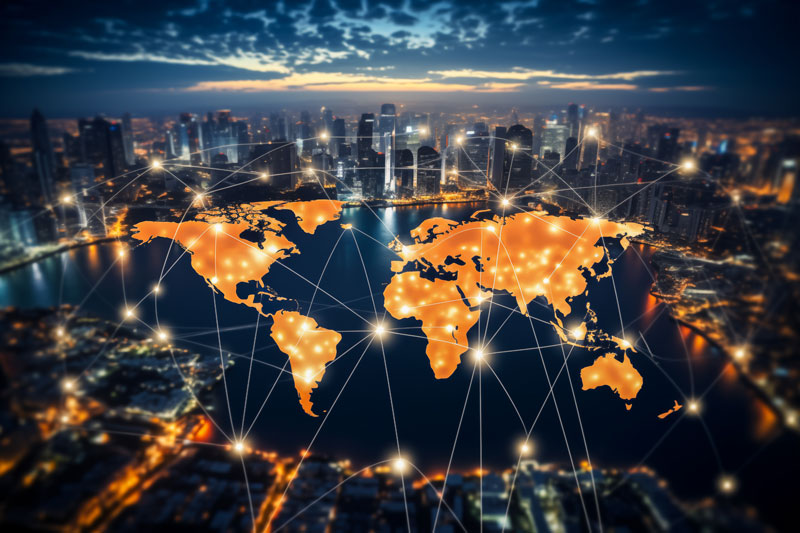For a long time, advanced uses of artificial intelligence (AI) in industries like the supply chain were largely aspirational. AI could perform certain tasks that might help ease administrative workloads or help address customer concerns through chatbots, but organizations dreamed of the day it could help make a significant impact on decisions and improve business outcomes.
In many ways, the technology has finally caught up to the aspirations. We’re beginning to get a clearer picture of how AI can be used to work with data in the supply chain, and there are specific examples of how organizations use AI to make a difference.
AI tools can provide an advantage
Harvard Business Review recently published the results of research into how global companies are using AI technologies to plan for and adapt to supply chain disruptions. It is no surprise that the companies that strategically use AI tools are in an advantageous position over their competitors.
When there is a disruption to the supply chain, many organizations are working at once to find alternative suppliers. This can be a time-consuming process, complicated by the fact that everyone is trying to do the same thing, so speed matters. AI can help find alternative supply sources on short notice, quickly analyzing data that would take much longer by hand to give an organization options for an alternative based on whatever parameters they set, whether that’s customer ratings, sustainability scorecards, or other elements the organization values.
The same is true of existing suppliers. AI can dive into the data of current relationships to find out what other options there are with suppliers that organizations might already be doing business with. Some organizations use AI to find domestic alternatives as a proactive move. By diversifying their supplier options, they are prepared for a disruption to an international supply chain.

AI guidelines
The researchers offer a few suggestions about the use of AI based on their work. One of the takeaways was the idea that an organization doesn’t always need to use AI. If partners are already communicating in a way in which they share in-depth information or there is minimal uncertainty for buyers, AI is not going to offer much value.
The researchers also learned that companies should test technologies before they commit to them. Because some AI technology is still developing, there could be shortcomings with some products when it comes to using certain data. Similarly, in some cases, it might be beneficial to use several different AI tools. One tool might do a very good job in finding specific information, but fall short in other areas, and a different tool could specialize in insights into those areas. The successful organizations can match the correct tools to the appropriate tasks and risk levels.
White House Council on Supply Chain Resilience
The government recognizes the opportunities it can take advantage of with these new capabilities. At the end of November, President Joe Biden announced the creation and held the inaugural meeting of the White House Council on Supply Chain Resilience. The council is part of the administration’s efforts to strengthen supply chains after weak points were exposed during the pandemic. The council consists of nearly every member of the president’s cabinet, and its creation is one of more than two dozen actions the White House announced as part of its supply chain work.
Part of the council’s work will involve data to monitor supply chain functions. According to the White House, “The Department of Commerce’s new, first-of-its-kind Supply Chain Center is integrating industry expertise and data analytics to develop innovative supply chain risk assessment tools, and is coordinating deep-dive analyses on select critical supply chains to drive targeted actions to increase resilience.” As part of that work, the Department of Commerce is working with the Department of Energy to analyze clean energy supply, and with the Department of Health and Human Services to assess data addressing foreign supply chain vulnerabilities and points of failure for critical drugs. The White House also announced that participants in the Department of Transportation’s FLOW program are beginning to use the program’s data to inform their logistics decision-making.
While the pandemic caused supply chain inconveniences that some organizations still haven’t recovered from, it also brought attention to issues that might otherwise have gone by without action being taken. As a result, some businesses are working to fix their own vulnerabilities, while the government is taking steps to help make sure on a larger scale that these issues are remedied. It is clear as AI technology continues to advance that it will play a crucial part in those efforts.

- Analyzing the Challenges of Pharmaceutical Supply Shortages - April 26, 2024
- Summer is an Opportunity for Digital Transformation in Education - April 17, 2024
- Your Car is Tracking More than Miles per Hour - April 11, 2024



